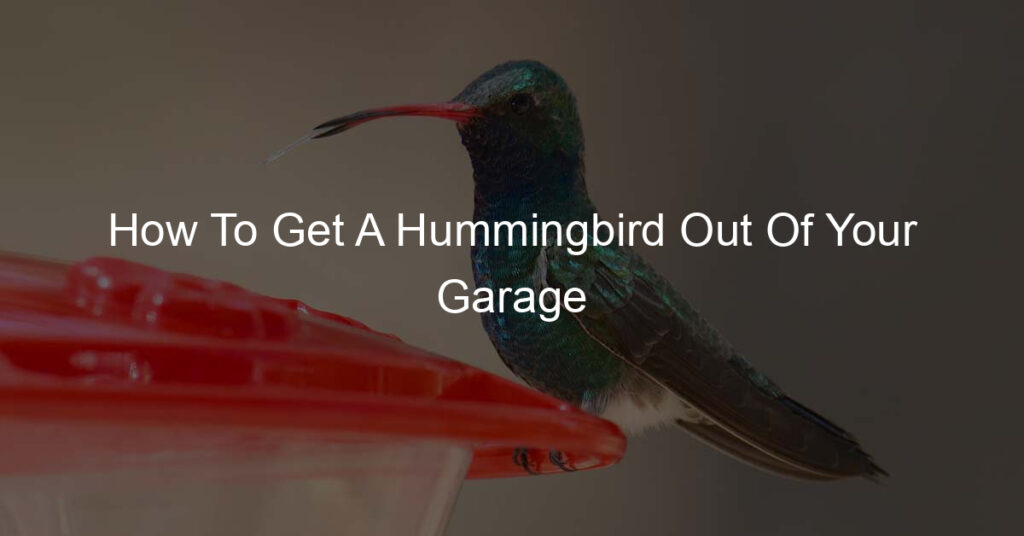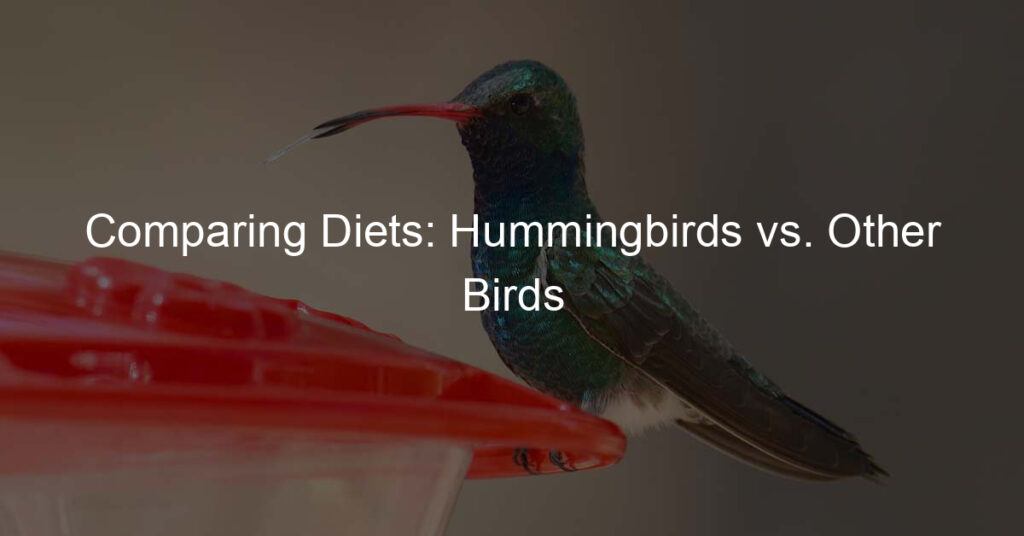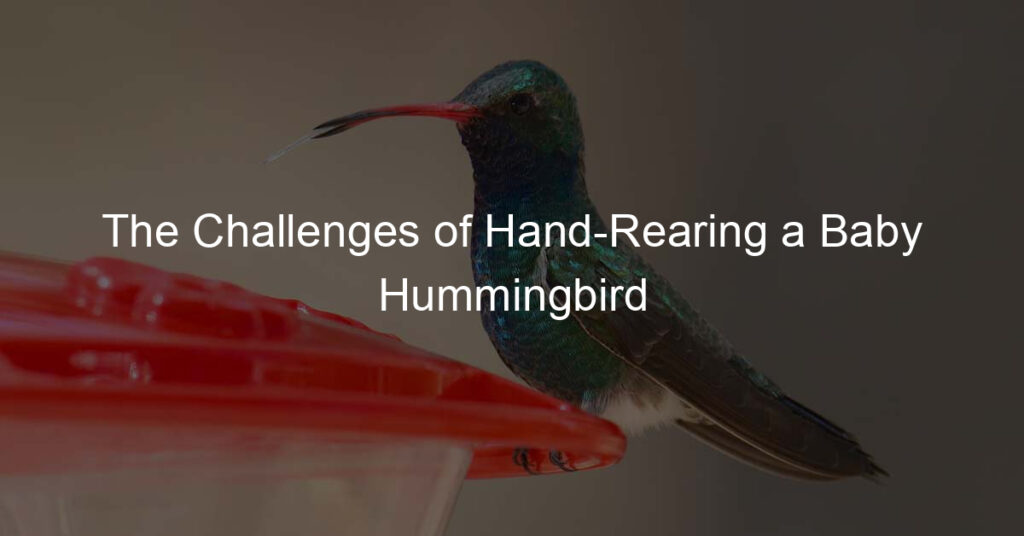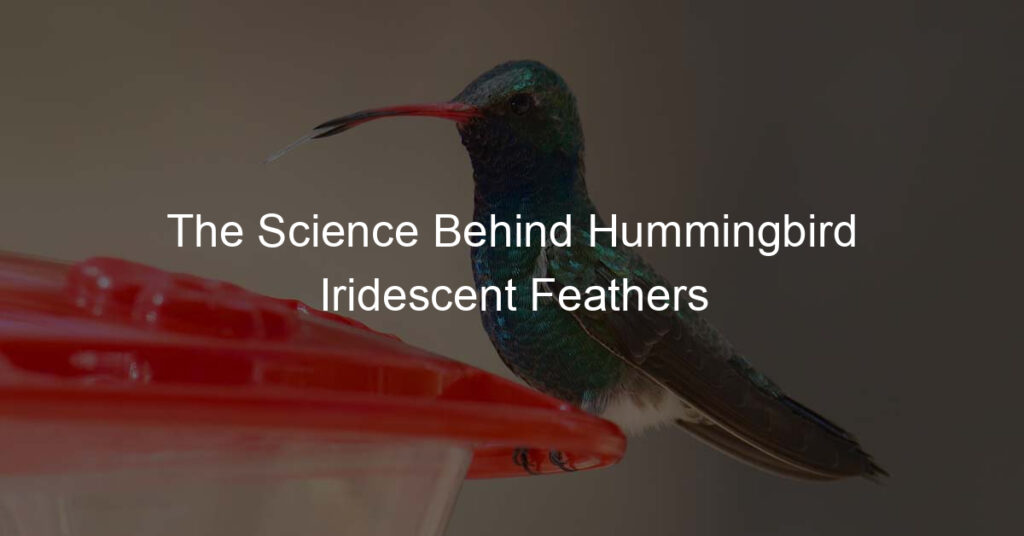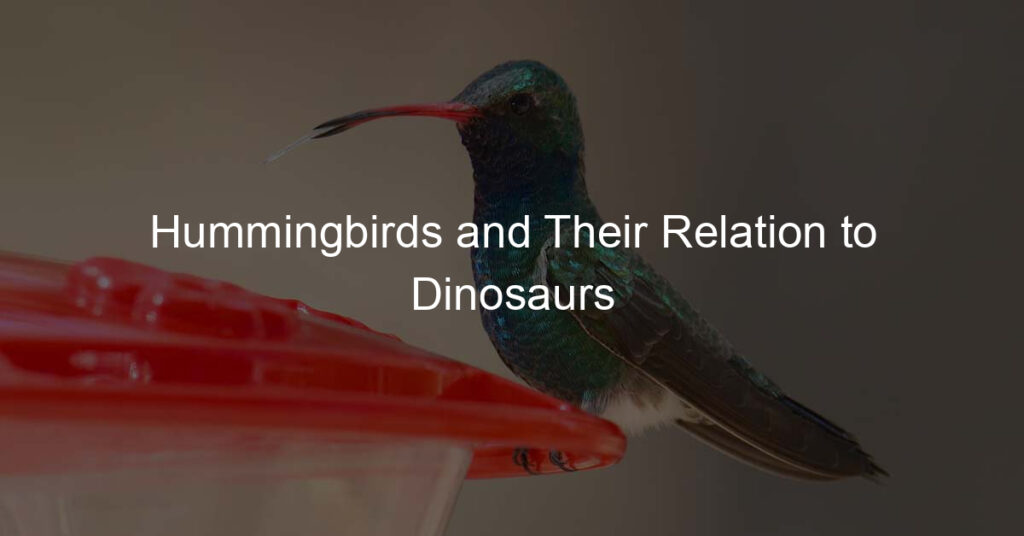Introduction: Hummingbird in Garage
Have you ever found a hummingbird in your garage? It’s not an uncommon situation, but it can be quite alarming. This article will guide you through understanding the situation and why it’s crucial to act quickly.
Understanding the situation: Hummingbird in garage
Hummingbirds are small, fast-flying creatures that are attracted to bright colors and sweet nectar. They are often found in gardens and parks, but sometimes they can accidentally fly into garages. This usually happens when the garage door is left open and the bird mistakes the interior for a safe place to rest or find food. However, once inside, they can become disoriented and unable to find their way out.
Why it’s important to act quickly
Hummingbirds have a very high metabolism and need to feed frequently. Being trapped in a garage without access to food or water can quickly become a life-threatening situation for them. Furthermore, they can become stressed and injure themselves while trying to escape. Therefore, it’s important to act quickly and carefully to help the hummingbird find its way out.
In the following sections, we will provide detailed steps on how to safely guide a hummingbird out of your garage, house, or screened-in porch. We will also share some inspiring hummingbird rescue stories. So, stay tuned!
Understanding Hummingbirds
Hummingbirds are fascinating creatures with unique behaviors and characteristics that set them apart from other bird species. In this section, we will delve into understanding their behavior, specifically focusing on why they often get trapped in houses and garages, and what it could possibly signify.
Hummingbird Behavior
Hummingbirds are known for their vibrant colors, rapid wing beats, and the distinctive humming sound they produce. However, they also exhibit some behaviors that may seem peculiar to us. Let’s explore two of these behaviors.
Why hummingbirds get trapped in houses and garages
Hummingbirds are attracted to bright colors and sweet smells, which often leads them into human habitats. They may mistake a brightly colored garage or house for a source of nectar and fly in, only to find themselves trapped. Their rapid metabolism requires them to feed frequently, so they quickly become exhausted and unable to find their way out.
Hummingbird in garage meaning: Is it a sign?
Many cultures view the appearance of a hummingbird as a sign or omen. Some believe it brings luck, while others see it as a message from a loved one who has passed away. However, from a scientific perspective, a hummingbird in your garage is likely just looking for food or shelter. It’s important to help it find its way out safely to prevent exhaustion and starvation.
Understanding these behaviors can help us coexist with hummingbirds and assist them when they find themselves in tricky situations. In the following sections, we’ll discuss how to safely remove a trapped hummingbird from your garage or house and share some heartwarming rescue stories.
Hummingbird Physiology
Understanding the physiology of hummingbirds is crucial to ensure their safety and well-being. These tiny creatures are marvels of nature, with unique physical characteristics that set them apart from other birds. Let’s delve into why it’s so important not to hurt a hummingbird and how you can safely catch one if needed.
Why it’s crucial not to hurt a hummingbird
Hummingbirds are incredibly delicate creatures. Their bones are so light and thin that they can easily break. Moreover, they have a rapid heartbeat, which can reach up to 1,200 beats per minute when they are in flight. This high metabolic rate means that any stress or injury can have severe consequences. A hurt hummingbird may not be able to fly, feed, or escape from predators, leading to a drastic decrease in its chances of survival. Therefore, it’s crucial to handle these birds with extreme care and avoid causing them any harm. For more detailed information, check this Wikipedia article about hummingbirds.
How to catch a hummingbird without hurting it
Catching a hummingbird should always be the last resort and should only be done if the bird is in immediate danger. If you find yourself in such a situation, here are some steps you can follow:
Wear gloves to protect the bird from your skin oils.
Approach the bird slowly and calmly.
Extend your hand gently towards the bird.
Once you have the bird in your hand, hold it gently but firmly to prevent it from escaping or injuring itself.
Place the bird in a safe, warm, and quiet place until you can get it to a wildlife rehabilitator.
Remember, the goal is to minimize stress for the bird. If you’re unsure about what to do, it’s always best to contact a professional.
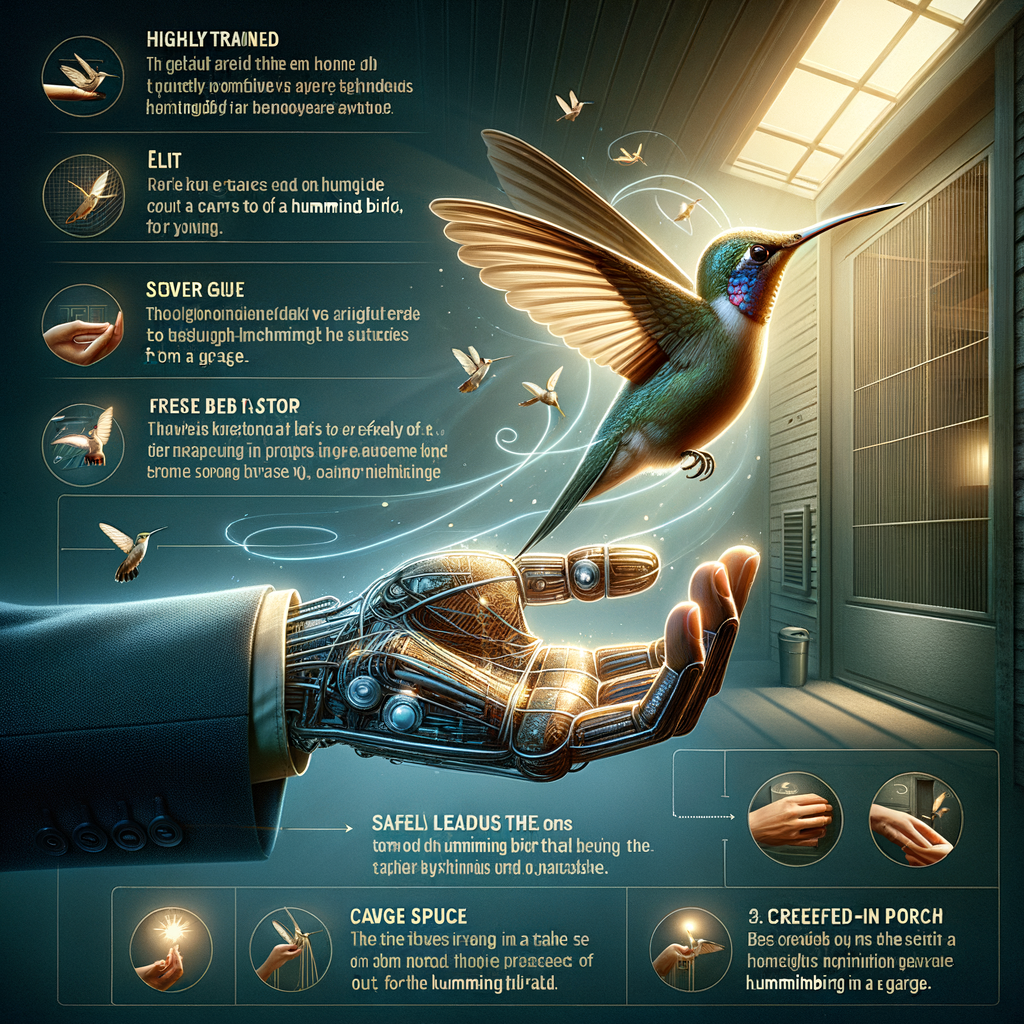
How to Get a Hummingbird Out of Your Garage
Discovering a hummingbird in your garage can be a surprising event. These tiny, fast-flying birds can sometimes find themselves trapped in places they don’t belong. Here’s a simple, step-by-step guide on how to safely help a hummingbird find its way out of your garage.
Step-by-Step Guide
Assessing the situation
First, observe the hummingbird from a distance. Is it flying around or sitting still? Does it appear injured? Knowing the bird’s condition will help you plan your next steps. Remember, the goal is to get the bird out safely without causing any harm.
Preparing for the rescue
Before you start the rescue process, make sure you’re prepared. Wear gloves to protect your hands and to avoid direct contact with the bird. Gather a lightweight towel or cloth, which you can use to gently guide the bird if necessary. Turn off any fans or machinery in the garage to ensure the bird’s safety.
Executing the rescue
Open the garage door fully, and any windows if possible. Turn off the lights to encourage the bird to move towards the natural light. If the bird doesn’t find its way out, you can try to gently guide it using the cloth. Be patient, as this may take some time.
Releasing the hummingbird
Once the hummingbird finds its way out, observe it for a few moments to ensure it’s able to fly away safely. If the bird seems injured or disoriented, contact a local wildlife rescue organization for further assistance. Remember, the key to a successful hummingbird rescue is patience and care. With these steps, you can help ensure the hummingbird safely returns to its natural habitat.
Precautions to Take
When trying to help a hummingbird out of your garage, it’s important to take certain precautions. This is not just for your safety, but also for the bird’s well-being. Here are some key points to remember:
Ensuring your safety: It’s crucial to protect yourself first. Wear gloves and safety glasses to prevent any accidental injuries. Also, move slowly and calmly to avoid startling the bird, which could lead to it flying erratically and potentially causing harm.
Ensuring the hummingbird’s safety: Hummingbirds are delicate creatures. Handle them gently and avoid any sudden movements. If the bird appears injured, do not try to treat it yourself. Instead, contact a local wildlife rescue center. Hummingbirds can get stressed easily, so it’s important to keep the environment quiet and calm.
Remember, your goal is to help the bird return to its natural environment safely. By taking these precautions, you can ensure a successful rescue operation.
How to Get a Hummingbird Out of Your House
Hummingbirds are beautiful creatures, but sometimes they can find their way into our homes and struggle to find their way out. Here’s how you can adapt the garage rescue guide to help a hummingbird out of your house.
Adapting the Garage Rescue Guide
While the garage rescue guide is designed for a garage setting, it can be modified to suit a house. Here’s how:
Modifying the Steps for a House:
First, turn off all indoor lights and close all doors leading to other rooms to prevent the hummingbird from getting further into your house. Then, open all windows and doors leading outside. If possible, use a broom or other long object to gently guide the bird towards the open exit. Remember to move slowly and calmly to avoid scaring the bird.
Special Considerations for Houses:
Unlike garages, houses usually have more rooms and furniture, which can make the rescue more challenging. Try to remove any bright, colorful objects that may attract the hummingbird and confuse it. Also, if the bird is in a room with a ceiling fan, make sure to turn it off to prevent injury.
Remember, the goal is to guide the hummingbird out of your house safely and calmly. Avoid any sudden movements or loud noises that could stress the bird. With patience and care, you can successfully help a hummingbird find its way back outside.
Preventing Future Incidents
While it’s a delight to watch hummingbirds fluttering around your garden, it’s not ideal when they get trapped inside your house. Here are some preventive measures you can take to avoid such incidents in the future.
How to make your house less attractive to hummingbirds
Hummingbirds are attracted to bright colors, especially red, which they associate with nectar-rich flowers. To make your house less appealing to them:
Consider changing the color of your window decorations, especially if they are red or bright in color.
Remove any feeders from near your windows or doors. Instead, place them further into your garden.
Use window decals or screens to make glass more visible, preventing hummingbirds from flying into them.
What to do if a hummingbird gets trapped again
If a hummingbird gets trapped in your house again, don’t panic. Remember these steps:
Turn off all indoor lights and close all doors leading to other rooms to prevent the bird from flying deeper into your house.
Open all windows and doors leading outside. The hummingbird will be attracted to the natural light and hopefully fly out.
If the bird doesn’t find its way out, you can gently guide it with a soft cloth or use a hummingbird feeder to lure it out.
Prevention is always better than cure. By making your house less attractive to hummingbirds and knowing what to do if one gets trapped, you can ensure the safety of these beautiful creatures.
How to Get a Hummingbird Out of a Screened-In Porch
Hummingbirds are fascinating creatures, but sometimes they can find themselves trapped in places they shouldn’t be, like a screened-in porch. This can be a tricky situation, but with the right approach, you can help the hummingbird find its way back to the great outdoors. Let’s explore the unique challenges of a screened-in porch and how to adapt the rescue guide for this specific situation.
Unique Challenges of a Screened-In Porch
A screened-in porch can pose unique challenges when it comes to rescuing a trapped hummingbird. The screens can confuse the bird, making it difficult for it to find the exit. The bird may also become exhausted from flying against the screen, which could put it in danger.
It’s important to approach the situation with care to avoid causing further stress to the bird. Remember, hummingbirds are delicate creatures and can easily be harmed if handled incorrectly.
Adapting the Rescue Guide for a Porch
Rescuing a hummingbird from a screened-in porch requires a slightly different approach than rescuing one from a garage or house. Here are some steps you can take:
Turn off all lights and close all doors leading to the interior of the house. This will help to prevent the bird from becoming further disoriented.
Open the door or window leading to the outside. If possible, place a brightly colored flower or feeder near the opening to attract the bird.
If the bird doesn’t find its way out, you may need to gently catch it. Wear gloves and use a soft towel or cloth to gently wrap around the bird. Be very careful not to squeeze or harm the bird.
Once you’ve caught the bird, gently carry it outside and release it near a feeder or flower.
Remember, patience is key when rescuing a hummingbird. It may take some time, but with a calm and careful approach, you can help the bird find its way back to the wild.
For more detailed information about hummingbirds and their behavior, you can visit the Hummingbird page on Wikipedia.
Hummingbird Rescue Stories
In this section, we will share some inspiring stories of hummingbird rescues. These stories highlight the importance of understanding these tiny creatures and the steps we can take to help them when they are in trouble.
Case Study: Garage Rescue
Our first story involves a hummingbird that found itself trapped in a garage. This case study will provide a detailed account of the situation, the steps taken to free the bird, and the lessons learned from the experience.
Background of the situation: One sunny afternoon, a homeowner discovered a hummingbird trapped in their garage. The bird was flying around in panic, unable to find a way out. The homeowner realized the bird was in distress and needed help.
Steps taken to free the hummingbird: The homeowner decided to act. They turned off all lights in the garage and opened the garage door wide. They then placed a bright red feeder near the garage entrance to attract the bird. The homeowner patiently waited, avoiding any sudden movements that could scare the bird.
Outcome and lessons learned: After a few tense moments, the hummingbird was attracted to the feeder and flew towards it, finally finding its way out of the garage. The homeowner was relieved and learned a valuable lesson about the importance of keeping garage doors closed to prevent small creatures from getting trapped. This experience also highlighted the effectiveness of using a brightly colored feeder to guide a lost hummingbird to safety.
In conclusion, this rescue story demonstrates the importance of understanding hummingbird behavior and using that knowledge to guide our actions when these birds are in distress. It also underscores the need for us to be mindful of our environment and the impact our homes can have on wildlife.
Case Study: House Rescue
Background of the situation: In a quiet suburban neighborhood, a tiny hummingbird found itself trapped inside a house. The homeowners noticed the bird fluttering against a window, trying to find its way back outside. The homeowners were concerned for the bird’s safety and wanted to help it return to its natural habitat. Hummingbirds, known for their speed and agility, can become stressed and exhausted if they are unable to escape from enclosed spaces.
Steps taken to free the hummingbird: The homeowners followed a series of steps to ensure the safe rescue of the hummingbird. First, they turned off all indoor lights and closed all interior doors to minimize distractions and guide the bird towards the exit. Next, they opened all windows and doors leading outside to give the hummingbird a clear path to freedom. They also placed a feeder with sugar water near the open exit to attract the bird. Throughout the process, they maintained a safe distance to avoid scaring the bird further.
Outcome and lessons learned: After a few tense moments, the hummingbird found its way to the open window and flew back to its natural environment. The homeowners were relieved and happy to see the bird return to the wild. This experience taught them the importance of being prepared for such situations. They learned that remaining calm, minimizing distractions, and providing a clear exit path are crucial steps in helping a trapped hummingbird. They also realized the importance of having a hummingbird feeder at home, as it can be a useful tool in such rescue situations.
Case Study: Porch Rescue
Background of the situation:
One sunny afternoon, a tiny hummingbird found its way into a screened-in porch. The homeowner, Mrs. Johnson, noticed the bird’s frantic fluttering against the screen, trying to escape. Despite its small size, a hummingbird can be quite noticeable due to its fast wing movements and unique sound. Mrs. Johnson realized that the bird was trapped and needed help to get back to its natural habitat.
Steps taken to free the hummingbird:
Mrs. Johnson, being an animal lover, knew she had to act quickly. She carefully approached the bird, wearing gloves and a long-sleeved shirt to protect herself and the bird. She gently guided the hummingbird towards the porch door, using a soft broom to encourage its movement. It was a delicate process, as hummingbirds are fragile creatures. Mrs. Johnson also placed a feeder with sugar water near the open door to attract the bird and guide it to freedom.
Outcome and lessons learned:
After a few tense moments, the hummingbird found the feeder and, shortly after, the exit. It quickly flew off, disappearing into the nearby garden. Mrs. Johnson was relieved and happy to have helped the little creature. From this experience, she learned the importance of keeping the porch door closed to prevent such incidents. She also learned how to properly guide a trapped hummingbird to safety, knowledge she shared with her neighbors and friends to help protect these beautiful birds.
Conclusion: Hummingbird Rescue
In this article, we’ve explored the fascinating world of hummingbirds and the challenges they can face when they find themselves trapped in human-made structures like garages, houses, and screened-in porches. We’ve also shared some inspiring rescue stories and practical tips on how to help a trapped hummingbird find its way back to freedom.
Recap of Key Takeaways
We’ve learned that hummingbirds are unique creatures with fast metabolisms that require them to feed frequently. This can lead them to become trapped in places where they can’t find food or escape. We’ve also learned that it’s important to approach a trapped hummingbird calmly and gently, using a soft cloth or towel to gently guide it towards an exit. If the bird seems injured or exhausted, it may be necessary to contact a local wildlife rescue organization for help.
Some of the key steps in helping a trapped hummingbird include:
Turn off all indoor lights and open doors and windows to create an exit path.
Use a soft cloth or towel to gently guide the bird towards the exit.
Provide a sugar-water solution for the bird to feed on if it seems exhausted.
Contact a local wildlife rescue organization if the bird seems injured or unable to fly.
Final Thoughts on Freeing a Trapped Hummingbird
Helping a trapped hummingbird can be a rewarding experience, but it’s important to remember that these are wild creatures that are best suited to life in the great outdoors. Always approach a trapped hummingbird with care and respect, and do your best to minimize stress and discomfort for the bird. With a little patience and understanding, you can help a trapped hummingbird find its way back to freedom.
Remember, the best way to help hummingbirds is to create a safe and welcoming environment in your yard. Plant native flowers, provide fresh water, and hang hummingbird feeders to attract these beautiful birds and provide them with the resources they need to thrive.

